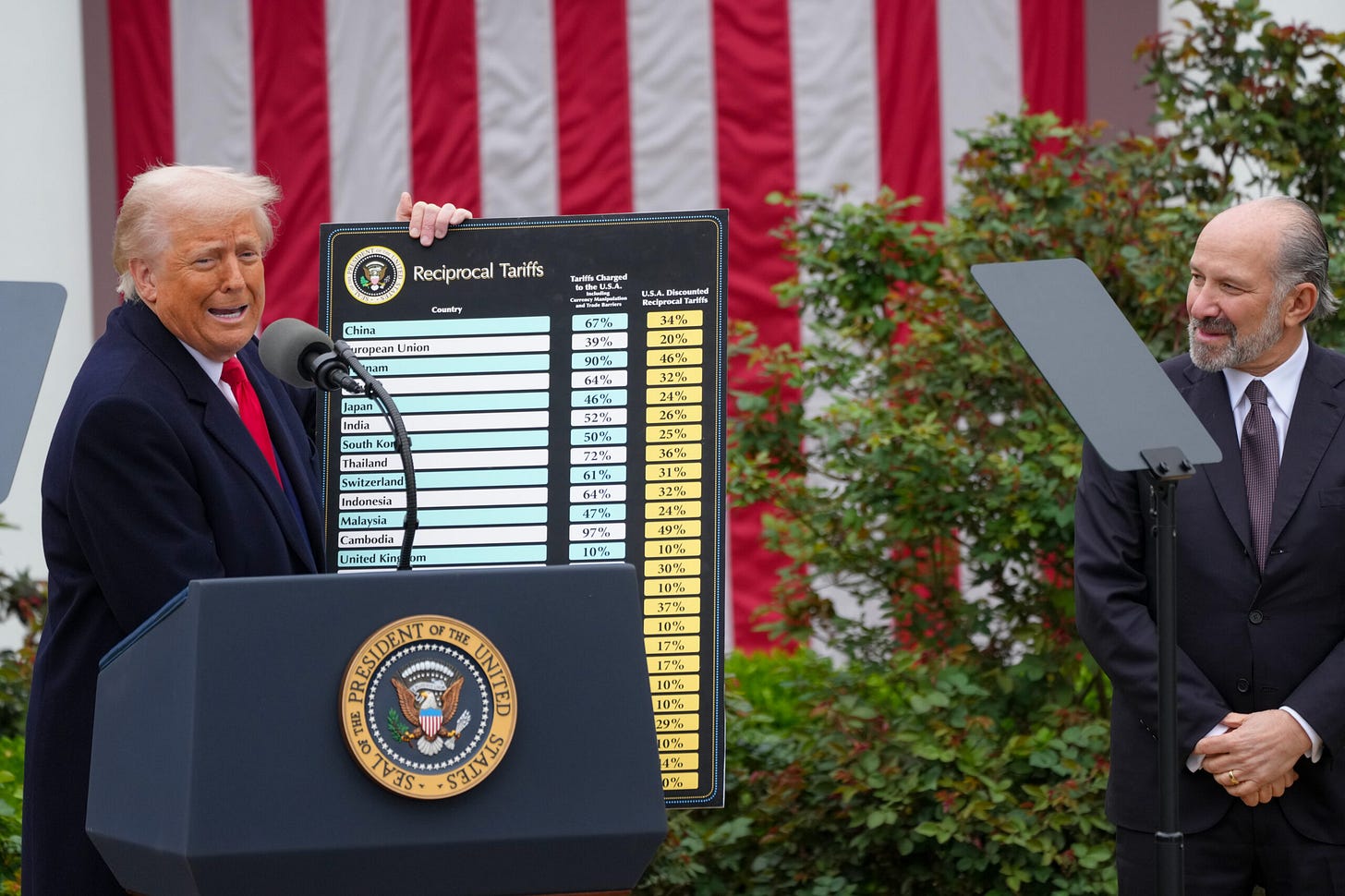“So you study economics at Columbia,” they always sneer, “then you must have strong opinions on the tariffs,” seemingly emphasizing every word they potentially disapprove of. Indeed, I study economics, and yes, I do think about tariffs often. My opinion, on the other hand, may be unique to the average Columbia student.
On one extreme, opponents of tariffs argue that they will fracture our global alliances, hurt the American consumer by increasing price levels, and bring unnecessary volatility to the established trade order. These beliefs are grounded in centuries of Ricardian economic thought, held by most major institutions and thinkers with strong evidence to do so. Of more than 300 economists recently polled by Reuters, 92% said tariffs would be “negative” for the global economy. The cheap goods caused by globalization and trade alliances are a cause for celebration, not concern, free-traders would exclaim.
In contrast, proponents of tariffs claim that international markets have for far too long benefited off of the US worker, thereby losing millions of jobs in the process, increasing our trade deficit, and offshored strategic US manufacturing. President Trump largely campaigned on imposing a 10% minimal tariff on all goods and an especially strong hand on Canada and Mexico. Often, economic psychology can’t be measured by inflation and GDP numbers alone, as evidenced by Trump's clear electoral mandate. For his voters, many of whom work in the blue collar industries that tariffs would support, it would be a disgrace if he didn’t impose them.
Furthermore, the recent crossing of $100 billion in cumulative customs duties collected in the US in 2025 (nearly double the number at the same point in 2024) is a cause for celebration amongst deficit and trade policy hawks. The fact that big businesses are assuming most of the tariff burden until this point also suggest that consumers so far have dodged the bullet. Whether they are bulletproof in the longterm remains to be seen.
Yet, despite this inherent contradiction and tension, both sides can be right. Tariffs are not binary. The key question is: can we achieve all of the goals prescribed by tariffs yet minimizing the damage to the US citizen? Can we onshore essential American industry, increase revenue, and rebuild a local industrial base without our taxpayers feeling it at the grocery store? Balancing that line is difficult, although possible. For President Trump to do so, there are two routes he can take while negotiating future trade deals in advance of the August 1st tariff deadline: industry-specific tariffs and tariffing only final goods.
Despite our highly polarized congressional and political circuits, there seems to be one topic of unanimous agreement: China. Delegating sensitive national security industries for Chinese production is universally disapproved of on Capitol Hill. Thus, imposing tariffs on drones, semiconductors, pharmaceuticals and other strategic goods will not only onshore critical US industries to create well-paying educated employment at home, but will ensure security-sensitive products are not in the hands of latent foes. Further, in the not-far-sighted event of a potential war, ensuring these vital goods are not susceptible to supply chain shocks is of vital importance, regardless of where the war will take place.
President Biden rightfully enacted these tariffs on China to little criticism and much applause. To ensure all critical stock is manufactured in the US, President Trump should continue where his predecessor began and enact them on ally and adversary alike.
One common argument against tariffs is the downstream effects of levies on intermediate goods. If you’re a shoe manufacturer in the US, tariffs imposed on leather and rubber will increase your input costs, therefore making your locally manufactured shoes less competitive than imported shoes from Vietnam. The Vietnamese-manufactured shoes will evade the intermediate goods markups by sourcing materials from its neighboring countries and only export the final produced goods to the US where it can charge its final markup. Thus, the Trump administration should impose tariffs only on final goods, ensuring that the necessary materials needed for local production are not taxed en route. Doing so would allow firms to reshore their production centers without the American citizen feeling the pain of the increased prices in each step of a complex supply chain. Meanwhile, the final goods that local and international businesses alike insist on producing outside the US will pay a necessary tariff to access the US consumer.
Imposing tariffs only on finished goods would also remove the unnecessary complications in shifting decades of production. From finding new manufacturing sources to crafting new local supply chains, the global trade uncertainty is one of the most cited causes of distress for US firms. Enacting tariffs on only final goods will shift business resources to investing in factories and engineering within the United States, opening employment opportunities nationwide. The newly widespread “Made in America” stickers would be a cause for joy, as would be the revitalized industrial base. Curiously, while academic research has supported this idea for some time, it has yet to gain its prominence in policymakers toolbox. Inspiration can be taken from agriculture and commodity markets where the theory of “tariff escalation” has found successes.
Tariffs are a double-edged sword. If applied correctly, they can be a brilliant source of revenue, reshoring, reconstruction, and when needed, reciprocity. However, President Trump must harness a white glove unparalleled in US history. Business as usual is easy; rerouting decades of trade alliances to benefit Main Street is not. Good luck President Trump – I am rooting for America.




An interesting historical perspective on tariffs worth reading. https://shorturl.at/y1K6O